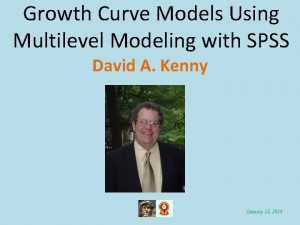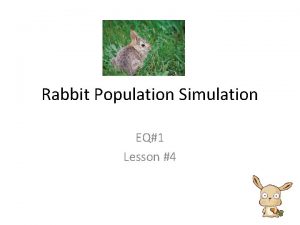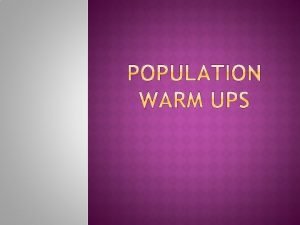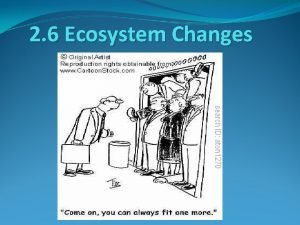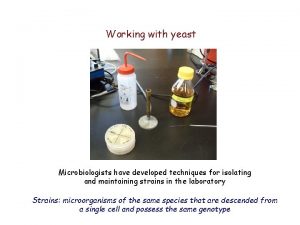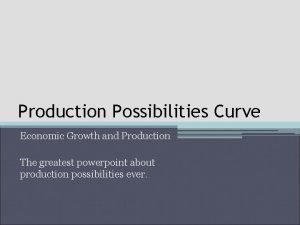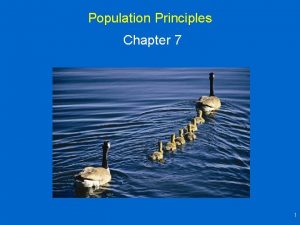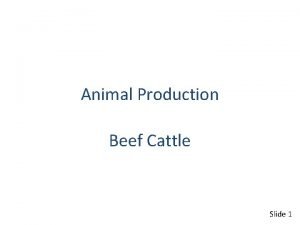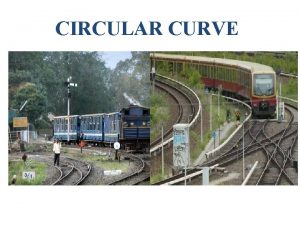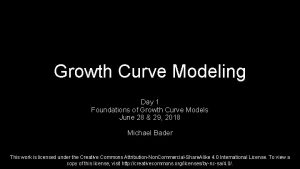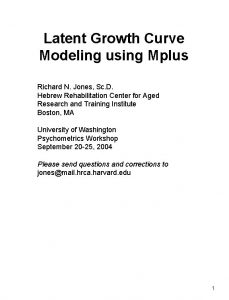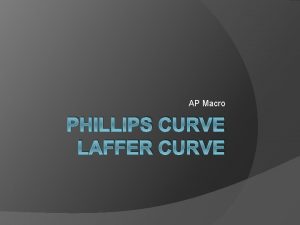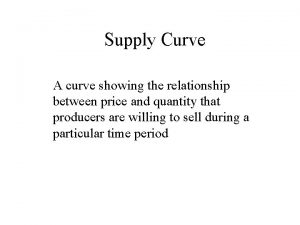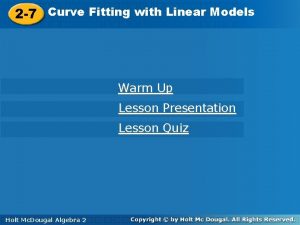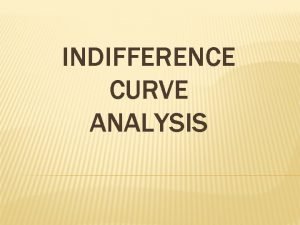Growth Curve Modeling Day 2 Applications of Growth





















- Slides: 21

Growth Curve Modeling Day 2 Applications of Growth Curve Models June 22 & 23, 2020 Michael Bader

Independent Variables

• Think about what unit at which you hypothesize the predictor acts • Does this predictor characterize the person? If yes, it is a time-invariant predictor • Does this predictor characterize a point of time in the person’s life? If yes, it is a time-varying predictor

Time-Invariant Predictors Do we think that the trait • leads some group to have higher values at the outset than another group, but both groups generally change at a similar rate? • leads groups to change at different rates after having no meaningful difference in where they started? • is associated with both different starting values and different rates of change?

Time Invariant Predictors

Time Invariant Predictors

Time Invariant Predictors We are just making a regression out of the intercepts!!!

If we think that the trait leads some group to have higher values at the outset than another group, but both groups generally change at a similar rate:

If we think that the trait leads groups to change at different rates after having no meaningful difference in where they started

If we think that the trait is associated with both different starting values and different rates of change?

All growth curve models are regressions!!!

Time Varying Predictors

Trajectory analysis

Latent Classes • Identify groups (classes) based on common variation • Stochastic variation can be explained by membership in class

Latent Growth Trajectories Variation across individuals is captured by latent class membership Equivalent to a latent class that uses the (latent) intercept and slope parameters to identify classes

Latent Growth Trajectories • Do not know the number of classes (K) a priori • Sequentially add classes to the model to minimize AIC, BIC, LRT • For every group i in your data, the model will reveal the probability that the group belongs to class c in the model

Growth Mixture Models Variation across individuals is captured by latent class membership and random variation off of class intercept and trend

Review

Base Models • All models have three components, ensure you have thought about how all three work: 1. 2. 3. Outcome (datum-level variation) Deterministic (data-level variation) Stochastic (datum-level variation) • Our goal is to minimize errors at different levels (“fancy means”) • Think about how your data vary over units and over time • Estimating models of your data • Simulate your model and make guesses about coefficients • Analyze collected data to using simulated model & code

Differences in Variation • Consider interpretation of analysis when choosing intercept • Think carefully about how time should be measured • Describe data by examining trends and deciding on shape of change • Decide on covariates to include in the models with careful attention to how you think that they affect the outcome • Determine whether data follow a single trajectory with random variation or follow categorically distinct trajectories

Thank You! Questions: bader@american. edu
 Day 1 day 2 day 3 day 4
Day 1 day 2 day 3 day 4 Growth curve modeling spss
Growth curve modeling spss Day 1 day 2 day 817
Day 1 day 2 day 817 Observation of plant growth day by day
Observation of plant growth day by day Role modeling theory
Role modeling theory Dimensional modeling vs relational modeling
Dimensional modeling vs relational modeling Modeling population growth rabbits answer key
Modeling population growth rabbits answer key Elliptic curve cryptography applications
Elliptic curve cryptography applications Hyperbolic vs sigmoidal curve
Hyperbolic vs sigmoidal curve S curve and j curve
S curve and j curve Thielmann formula
Thielmann formula Biotic potential and environmental resistance
Biotic potential and environmental resistance Yeast cell growth curve
Yeast cell growth curve Ppc curve economic growth
Ppc curve economic growth Survivorship curve
Survivorship curve What is population ecology
What is population ecology Fastidious organisms
Fastidious organisms Factors affecting growth of microbes
Factors affecting growth of microbes Beef cattle growth curve
Beef cattle growth curve Virology
Virology Sobia canyon pricing
Sobia canyon pricing Virus virion
Virus virion

